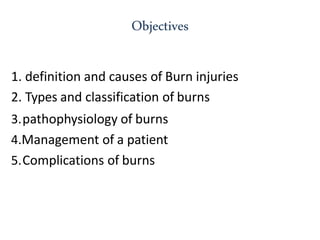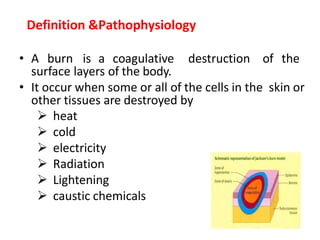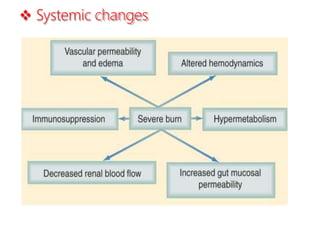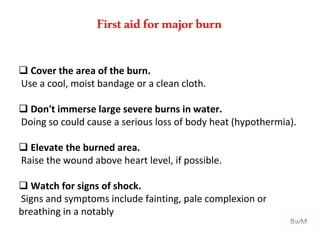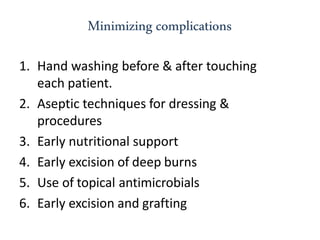This document outlines the assessment and management of burn injuries. It defines burns as coagulative destruction of skin or tissue layers caused by heat, cold, electricity, radiation, chemicals or lightning. Burns are classified based on depth of tissue damage into superficial/first degree, partial thickness/second degree, full thickness/third degree, or fourth degree burns affecting deeper tissues. Assessment involves determining burn depth based on appearance and sensitivity. Management includes initial interventions to ensure airway, breathing, circulation, then covering and elevating burns, watching for shock, and minimizing complications like infection through aseptic techniques and early excision/grafting.


